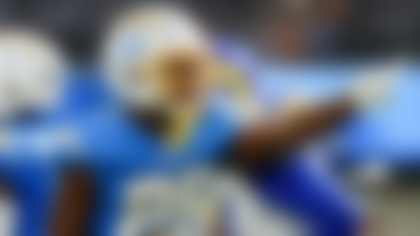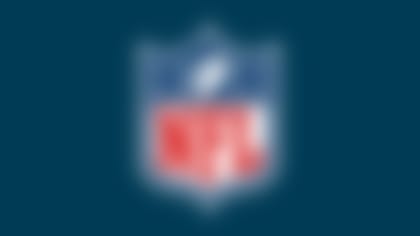Two Arkansas running backs, Darren McFadden and Felix Jones, are likely to be selected in the first round of the NFL Draft.
It would be the third time in four years, following the 2005 selections of Auburn's Cadillac Williams and Ronnie Brown and the 2006 selections of USC's Reggie Bush and LenDale White, that two running backs from the same college were high picks in the same draft.
Makes you wonder a bit, doesn't it?
Well, perhaps not as much as it used to.
"The bottom line with the second guy always is, 'Well, if he can't start at his school, and he didn't leave and go someplace else to start, how good could he be?'," said a former NFL general manager, who did not want to be quoted by name discussing draft prospects.
"Any time you get two guys to share loads like that (in college) ... you kind of wonder how good either one of them is."
That doubt is not universal. A personnel man with another team suggested that perhaps Jones was "happier" filling his role at Arkansas than going somewhere else. Both backs produced good numbers when they played and some NFL teams believe they saw enough of both to pass judgment.
As seniors, Jones carried just 133 times, McFadden 325. McFadden averaged 5.6 yards a carry, Jones 8.7, an impressive number. One lingering question is whether those carries for Jones, about 10 a game, were enough to demonstrate, among other things, that he has the durability the NFL demands?
Jones "has great speed, but he's not a real big man," said one NFL assistant coach, who could not be identified because of team policy. "The question is, is he a Reggie Bush, or how many times can he carry the ball?"
Bush had a great career in college, but so far has not been a big producer as an NFL running back with New Orleans. White, meanwhile, rushed for 1,110 yards and seven touchdowns last season with the Titans. There are some who believe Jones could be another Bush type, a specialty player who could help in some areas, but is not capable of carrying a major running back load in the NFL.
NFL teams are looking for more running backs in today's game because many teams have gone to a system of alternating backs. And, as teams split the workload, they are forced to dig deeper into college rosters for their players, which makes them more willing to consider drafting a backup or part-time player from a big program than they used to be.
"You're seeing movement in the league now toward more than one running back," explained the former GM. "For years, everybody thought it was a luxury to have more than one, but now it's almost becoming a necessity.
"But you have to be careful about what you're evaluating, what you're looking at."
The assistant coach pointed out that NFL teams have to balance the value of the snapshot they get, particularly of a part-time player, against the three or four years he spent with a college coach.
"From a coaching standpoint, you say, 'Why did the coaches start this guy over that guy?' They see him in practice all the time, they see his pluses and minuses," the coach said. "If you're coaching at a major college, you're a good football coach, so (a prospective drafting team) says, 'Hey, what are they seeing that I'm not seeing?' You have to weigh that question."
McFadden is bigger and considered the more polished of the two runners and almost certainly will be drafted ahead of Jones. But the real question is whether this trend will accelerate. So far, history has provided mixed results on performance when two highly-rated backs emerge from the same college program around the same time.
In 2005, Brown was drafted by Miami with the No. 2 overall pick, and Williams was chosen No. 5 overall by Tampa Bay. Both of them suffered season-ending injuries in the first half of the 2007 season, but overall, Brown has been the more productive player. He was fourth in the league in rushing and averaging 5.1 yards a carry when his 2007 season ended in the seventh game.
There was also a third back on that Auburn team, Brandon Jacobs, who couldn't beat out Williams and Brown, transferred to Southern Illinois, and became a fourth-round pick by the New York Giants. Jacobs wound up carrying the load for the Giants last season, rushing for more than 1,000 yards and averaging 5.0 a carry.
Some other noteable cases of high-profile backs on the same college team:
» In 1983, SMU's Eric Dickerson and Craig James were in the draft after great careers at SMU. They both had size and both had been tested because, in that era, colleges depended much more on the running game than the passing game. Dickerson was considered the better prospect and, this time, the scouts were right on. He went to the Rams on the second overall pick (behind John Elway); James was a seventh-rounder. Dickerson, of course, is now in the Hall of Fame. James had one big season before fizzling out.
» In 1972, Penn State's Lydell Mitchell and Franco Harris were in the draft but they played different positions in college, Harris as a fullback and Mitchell as a halfback. Mitchell had the numbers, including 27 touchdowns as a senior, but Pittsburgh chose the bigger Harris with the 13th overall pick and he became a Hall of Famer as one of the game's all-time leading rushers. Mitchell lasted until late in the second round, when the Colts chose him, and had a good, but not great career, lasting nine years including three seasons in the middle in which he rushed for more than 3,500 yards.
» Priest Holmes was a starting back at Texas until a knee injury opened the way for Ricky Williams to replace him in 1996, and Holmes never recaptured his starting job. Williams became a first-round draft choice by New Orleans and Holmes became a free agent who signed with Baltimore, where he ran into Jamal Lewis. Eventually, however, Holmes wound up with Kansas City and had a superb career, while Williams has been in and out of the league because of his off-field issues.
Veteran NFL writer Ira Miller is a regular contributor to NFL.com.



